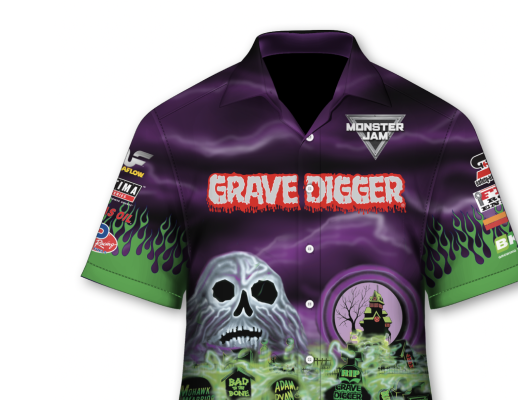While baseball may be seen as the Great American Pastime, football has far surpassed it as America’s favorite sport to watch. Nearly seventy thousand people attend each NFL regular season game, with an annual revenue of nearly ten million dollars. At every game, millions of fans show up donning their favorite player’s jersey to cheer on their favorite team. Football jerseys have been a symbol of the sport, as iconic as the ball itself, for decades– but how did they come to be?
Whether fans like it or not, football is a business. And like all businesses, the decisions made by owners and shareholders revolve around the consumers– the fans. The reason that football players wear jerseys in the first place is so that fans can identify who is on which team. While the basic reason that football players wear jerseys remains the same, their style has certainly evolved over the years.
History of Football Uniforms
The first football uniform was made of wool or cotton sweaters with no padding. Wool was the warmest material available to football players who played outside in the cold. This is also where the name “jersey” comes from; a jersey is traditionally an item of knitted clothing, usually made of wool or cotton.
As players saw a need for padding, leather patches were sewn onto the outside of the old-school football uniforms. The first in-the-jersey padding, produced in 1901, was made of thick leather held in place on the shoulders and other high-impact areas of the body with elastic straps.
In the 1960s, leather pads were replaced with sleek plastic and fiberglass pads.
Colors and Numbers
In 1948, a Los Angeles Rams running back painted horns on his helmet, which sparked a wave of logos being added to uniforms. In the age of black-and-white television, logos helped fans at home identify their team more than just varying shades of gray. When color television was developed in the 1960s, teams began to use brighter colors in their uniforms in addition to logos so that they would stand out and catch the eye of viewers.
Players had chosen their own numbers for decades, but in 1973, the NFL began regulating uniforms and included a numbering system for players based on their position. For example, quarterbacks and kickers can only wear a number from 1-19. When this rule went into effect, players were allowed to wear their old football jersey if they had played prior to 1973. The last player under this “grandfather clause” was New England defensive end Julius Adams, who wore his number until 1985.
Material
After the days of wool sweaters, football jerseys started to be made of polyester. As players realized that they needed to wear tight-fitting jerseys so that their opponents would not hang on to them, they added laces to the sides that could be used to tighten the uniform.
Looking to make it even easier to get away from their opponents, players turned to tear-away jerseys made of mesh with large holes. However, as one might expect, at the end of many games, players were barely wearing any of their jerseys! Because of this, the NFL banned tear-away jerseys.
In 1997, the Denver Broncos introduced spandex jerseys, which are still a part of NFL uniforms today.
Today’s Football Uniforms
The football uniforms of today are all about sleekness, color, and breathability. Short sleeves were replaced with even shorter sleeves, and tight elastic hugs the shoulder padding of every player. In the late 1990s, Nike redesigned the football uniform and reduced the number of seams from twenty-two to five, which made the jersey more durable.
In addition to the construction of football jerseys, NFL and college team uniforms now have multiple uniform colors for various games. Each jersey is carefully designed and may be a combination of football uniforms past and present or a “Color Rush”, in which the uniform is all one color. Professional teams may have up to four uniforms, with a color and white required for the road, and many college teams are following suit.
There are also superstitions surrounding certain jersey colors. When Seattle lost to Chicago in 2009, the Seahawks didn’t wear the neon-green jerseys again. When the Cleveland Browns beat the New York Jets 21-17 in 2018, the Color Rush uniform they wore became very popular with the team.
The Future of Football Uniforms
Future football uniforms will almost certainly see an increase in cleek, tight fabrics that are hard to grab on to, and of course, bright colors. Fans can’t always expect to love a new jersey design at first, but every superfan knows that wearing their favorite player’s jersey is the best sign of support.
Design Your Own Football Jersey
If you’re looking to design a custom jersey, check out our dye sublimated football jerseys! These can be customized to any team and made regulation for uniform use. Whether you’re looking for youth football uniforms or just want to rep your college team, send us a message to get started today!






